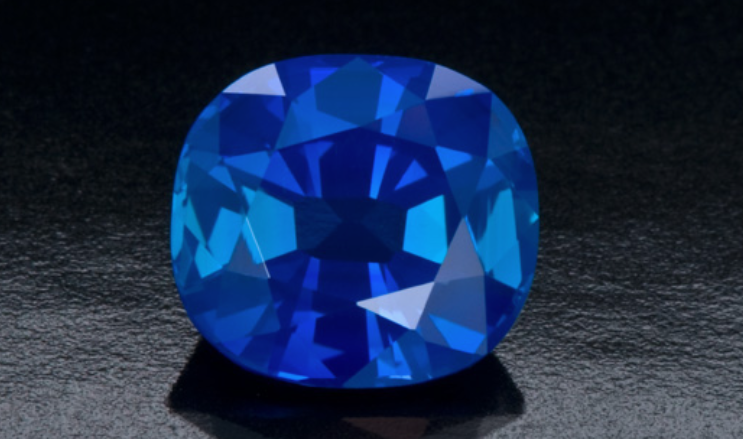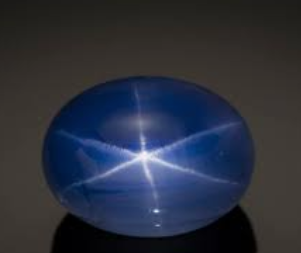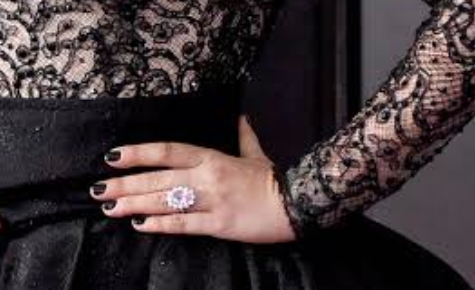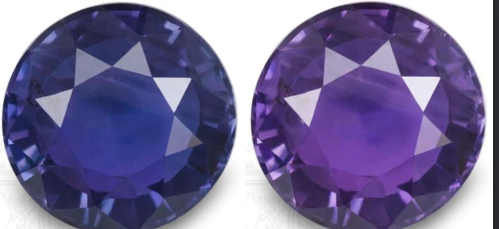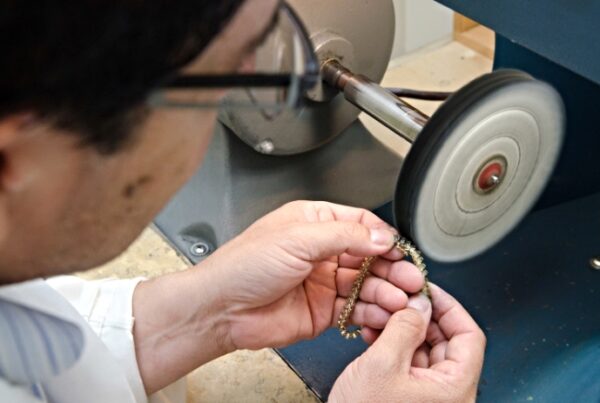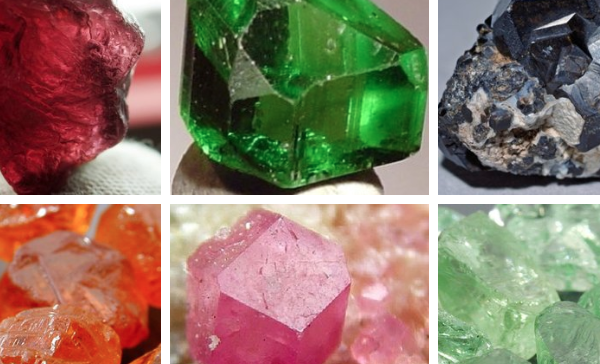Exquisite Sapphire
The sapphire gem is one of the most popular gems in the world. This birthstone for the month of September’s birthstone, as well as the gem for 5th and 45th wedding anniversaries, has been prized as far back in history as 800 BC. Its name is derived from the Latin word ““saphirus” and the Greek word “sapheiros,” both meaning blue. Sapphire is a member of the corundum mineral family, the same as ruby. The only difference between a ruby and a sapphire is the color. All red corundum is called ruby. Almost all sapphires are heat treated to enhance their color and clarity. Sapphire, along with ruby, emerald, and diamond, is considered one of the four main precious gems, so named because of their value and universal popularity.
Blue Sapphire
Gemstone color is described in terms of hue, saturation, and tone. Hue is the color of the gemstone – red, blue, green, etc. Saturation refers to the vividness or brightness of the hue. Tone is the lightness to darkness of the color. Blue sapphire exists in various mixtures of its primary blue color and its secondary hues, most commonly purple, violet, and green. Blue sapphires are graded based on the purity of their primary hue and the degree of presence of their secondary colors. While violet and purple can contribute to the overall beauty of a blue sapphire’s color, a green undertone is considered a negative attribute. Almost all sapphire is heat treated to
Fancy Sapphire
Although commonly the word sapphire brings to mind a rich blue colored gemstone, the sapphire gem occurs in a rainbow of colors including violet, dark gray, orange, yellow, pink, green, black, and clear. Clear sapphires are often used as diamond substitutes. These colored gems are referred to as “fancy sapphires” and can be less expensive than finer quality blue sapphire. Fancy colored sapphires are generally less available than blue ones, and some colors are quite scarce, especially in large sizes.
Fancy Sapphires
Star Sapphire
The star sapphire is a type of blue sapphire that exhibits a six-rayed star appearance (asterism) that seems to float across the surface of the gem. Those that are red in color are known as “star rubies”. These gems are always cut “en cabochon” (polished but not faceted), typically with the center of the star near the top of the dome. Occasionally, twelve-rayed stars are found.
Star Sapphire
Padparadscha Sapphire
The extremely rare padparadscha sapphire often draws higher prices than even the finest blue sapphires. This type variety of sapphire is mostly unknown to consumers because there are so few on the market. The padparadscha is a delicate, light to medium toned gem with a pink-orange to orange-pink color. It derives its name from the Sanskrit words “padma ranga” meaning lotus color. Originally found in Sri Lanka, deposits have also been found in Vietnam and parts of East Africa. Lady Gaga’s stunning engagement ring from former fiancé Christian Carino is believed to be a padparadscha sapphire.
Lady Gaga’s Engagement Ring
Color-change sapphire
Another fascinating and extremely rare variety of corundum is color-change sapphire. It has the ability to change color when viewed under different light sources. Usually blue in color, color-change sapphires change from blue in natural daylight to violet-purple in incandescent light.
Color change sapphires come from a variety of locations, including Thailand and Tanzania.
Color-change Sapphire
Folklore
For centuries, blue sapphire was considered a symbol of the heavens. Ancient Persians believed sapphires made the sky blue from their reflections. It has been worn as a defense against harm. In the Bible, it is recorded that King Solomon wore a sapphire ring. Russia’s Ivan the Terrible believed that wearing sapphire would strengthen the heart and give courage to the wearer. During the 11th and 12th centuries, sorcerers prized sapphire as an aid in interpreting the most obscure oracles. The Sinhalese people (Sri Lanka) valued star sapphire as a guard against witchcraft.
Blue sapphire has been identified with chastity, piety, and repentance, In the 12th Century, blue sapphire was considered a holy stone to the Roman Catholic Church and was used in ecclesiastical jewelry. It was thought to help promote a life of sincerity and serenity. The great Oriental traveler, Sir Richard Francis Burton, always traveled with a large star sapphire, which he called his “talisman.” He believed that mere sight of the stone would bring him and others good luck and ward off illness. He routinely displayed it to the many people he met on his journeys.
Sapphires also are associated with romantic love, representing fidelity and romantic devotion. In contemporary times, blue sapphire exploded in popularity when Prince Charles of England give a stunning 12 carat oval-cut Ceylon (Sri Lanka) sapphire engagement ring to Lady Diana. Prince William later gave his fiancé, Kate Middleton, this same stunning jewel as her engagement ring.
Geography
Every sapphire mine produces a wide range of quality, and the place of origin is not a guarantee of quality. The purest deep blue sapphires have been traditionally found in Myanmar (Burma) and Kashmir. These gems are known for their unique velvety luster. The mines in Kashmir are now completely depleted. Blue sapphires from Sri Lanka (Ceylon) and Madagascar are highly prized for their color, but those mines also produce sapphires in a wide range of colors. Sri Lanka is the world’s largest producer of sapphires over 100 carats. Less expensive sapphires from Australia and Thailand tend to be dark blue with slightly green undertones. Western Cambodian mines produce sapphires of beautiful color, but they are usually small in size. Mines in China and Nigeria produce dark stones. Mines in Montana, U.S. produce sapphires that have a unique metallic blue color. This color occurs naturally, without requiring any heat treatment, unlike most sapphires. Sapphires also mined in Kenya, Tanzania, Brazil, Malawi, Columbia, and Zimbabwe.
Physical Properties
Sapphire is extremely hard, measuring 9 on the Mohs scale, second only to diamond. Because sapphire is so durable, it is used widely not only for jewelry, but also for industrial applications including scientific instruments, high-durability windows, watches and electronics. Its durability makes it suitable for everyday wear, and it requires no special cleaning methods. Sapphire gems can be cleaned manually by using a soft brush and a mild solution of water and ammonia, rinsed thoroughly, and then patted dry. Sapphire can also be safely used in ultrasonic cleaners.
Whether you are looking to select a loose gem or a stunning piece of our designer jewelry, our highly trained jewelry professionals are ready to help you. Located at 11219 S Dixie Highway, Pinecrest, Miami, Florida, we are open from 10am-6pm Monday through Saturday. There is always plenty of free parking.! Have questions? Just give us a call at (305) 252-1123. Make sure to ask about our 12 Month Interest Free Financing!
